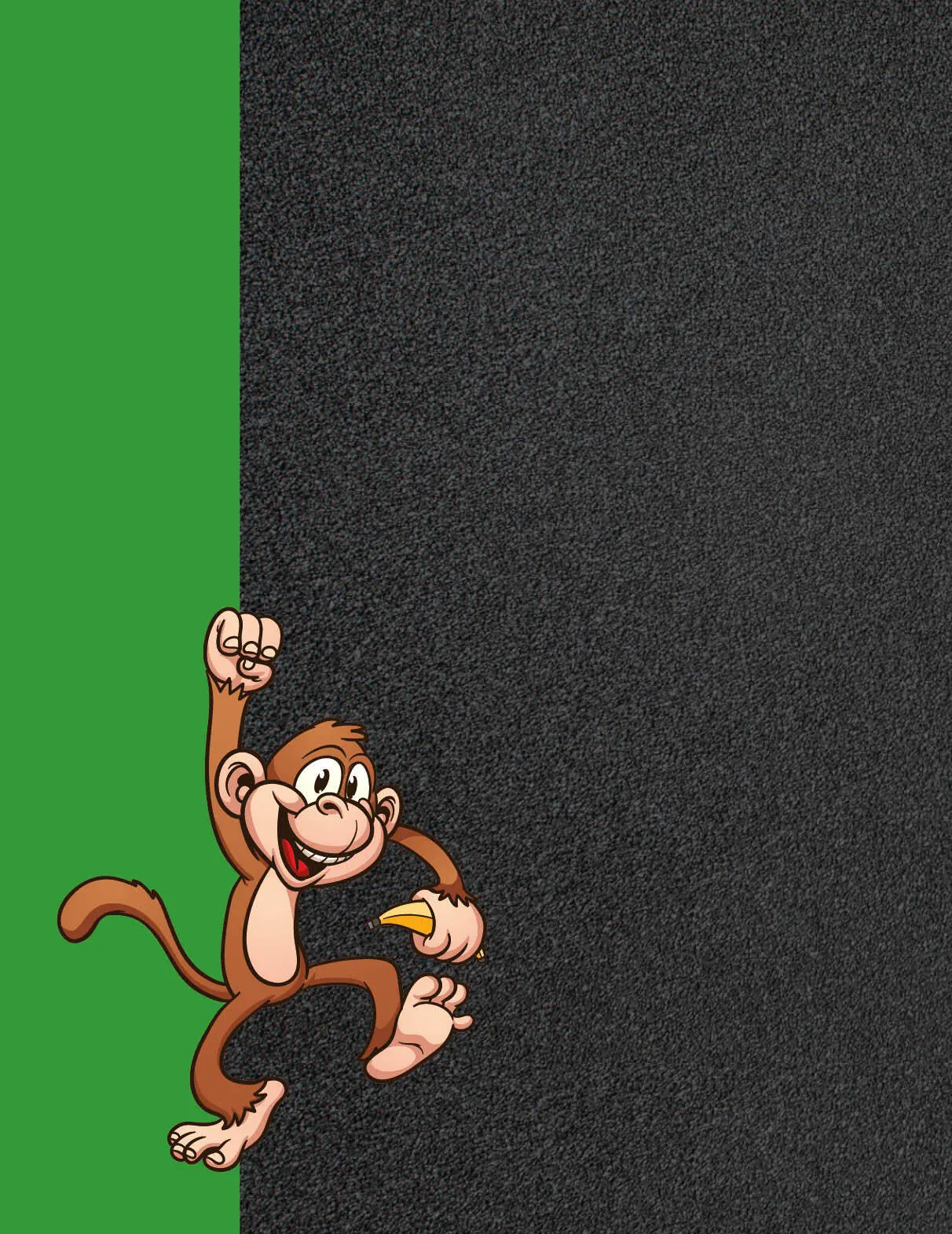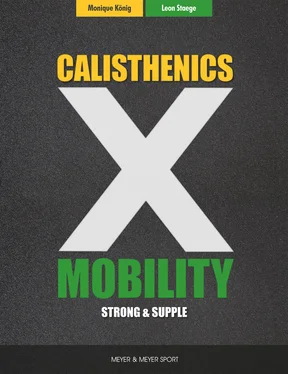This book allows us to bring our movement concept for longevity out into the world to accompany you on your very own Calisthenics & Mobility journey.
Our journeys began in early childhood. To both of us, growing up with competitive sports meant learning early on to work for a physical goal. Character, for each of us, was shaped by discipline, willpower, and performance which could all be accessed anytime. Competitive sports created a positive attitude toward our bodies in motion. Four to five training sessions per week and competitions on weekends taught us that hard physical work can be very rewarding. Our sessions helped us grow physically, mentally, and emotionally.
The joy of movement was so great for us that we both chose a career path that would allow us to share our knowledge and personal experience with you. The essence of our concept is this: reaching your goal healthy and pain-free.
Calisthenics & Mobility refers to the symbiotic relationship between strength and mobility. We’ll show you the most-important principles of these two interconnected areas. Both can be viewed as separate elements, but in this book, they should be viewed as an interrelated construct with a correlated and positive effect.
The content of this book focuses on resistance training with one’s own body, specifically with calisthenics. This isn’t a new type of sport but, rather, a neologism. Calisthenics could be considered the modern gymnastics. It prioritizes progressive strength increase via the basics (e.g., pull-ups, push-ups, dips, and knee squats).
Mobility training as a fitness-related ability is often neglected in favor of strength.
Most underestimate the fact that a greater degree of motion results in more strength.
Mobility training creates the balance between movement without strength and rigid strength.
At the same time, you’ll get more long-term enjoyment from your training, due to fewer injuries, and when you are in pain, you’ll have the right exercises at hand.
This book is intended to get you to move. For us, it’s not about bulging muscles. Rather, we want you to learn to understand your body.
We’ll teach you which technical details of the exercises are important so your musculoskeletal system will enjoy long-term good health. We’ll provide you with the most-important know-how so you’ll be able to use different, helpful tools from your tool kit.
With all the input you’ll receive, please keep in mind the following during your journey:
1. Anyone can work with mobility and calisthenics, regardless of age and gender.
2. Every person is an individual with different abilities.
3. There’s no single best method.
4. Don’t think about the approach–just start.
5. Comparing yourself to others won’t help you one bit.
This book does away with lots of preconceived notions in order to give you clear guidelines for your training. Calisthenics is only for tough guys? Flexibility is genetically predetermined? Far from it! We’ll show you how to find long-term joy in training and get stronger and more flexible, all while staying pain-free.
In this spirit, do the following:
Stay loose, flex your biceps.
Keep moving, stay sexy.
Monique & Leon
Introduction: Book Layout
Before you embark on your Calisthenics & Mobility journey, we’d like to give you some tips on how to use this book.
You can choose to read everything in the order it’s presented or skip between sections. The many chapter and section cross-references ensure you won’t lose the thread and will, by the end, understand the link between mobility and calisthenics.
We’ve brought the authentic delivery style of our workshops to this book so we can bring the atmosphere of a live workshop to your home. Besides, this is a book about calisthenics and not about traditional German gymnastics from Saxony-Anhalt.
In this book, we talk about front levers and muscle-ups.
The book is divided into a mobility section and calisthenics section, which are further divided into theoretical and practical segments. The practical segments include image-guided explanations of exercises.
In these practical sections of the book, look for the following symbols, which provide simple illustrations of the most-important technical details for the execution of an exercise:
 |
External rotation |
 |
Shoulders away from ears (depression) |
 |
Watch your breath |
 |
Maintain body tension (hollow-body position) |
 |
Lengthen your spine |
If you don’t yet understand all this terminology, don’t panic. We provide detailed descriptions in the following chapters and in the glossary at the end of the book.
Every exercise is also accompanied by a difficulty rating. To be exact, it’s a banana scale for Leon’s mobility exercises and a biceps scale for Monique’s calisthenics exercises.

 = very easy
= very easy
 = easy
= easy
 = somewhat difficul
= somewhat difficul
 = difficult
= difficult
 = gorilla-level difficult
= gorilla-level difficult
But enough about legends and instructions. By now you’re probably impatiently tapping your feet, ready to dive into your adventure.


What Motivates Me to Get You Moving
My exercise path started quite early. At age two, I was on the Wildenrath golf course, which was largely built by and then managed for many years by my father. He often reminded me that I had talent and that the other guests on the driving range spoke of “the next Tiger Woods” in my presence. Surely, they were joking!
Читать дальше







 = very easy
= very easy = easy
= easy = somewhat difficul
= somewhat difficul = difficult
= difficult = gorilla-level difficult
= gorilla-level difficult












